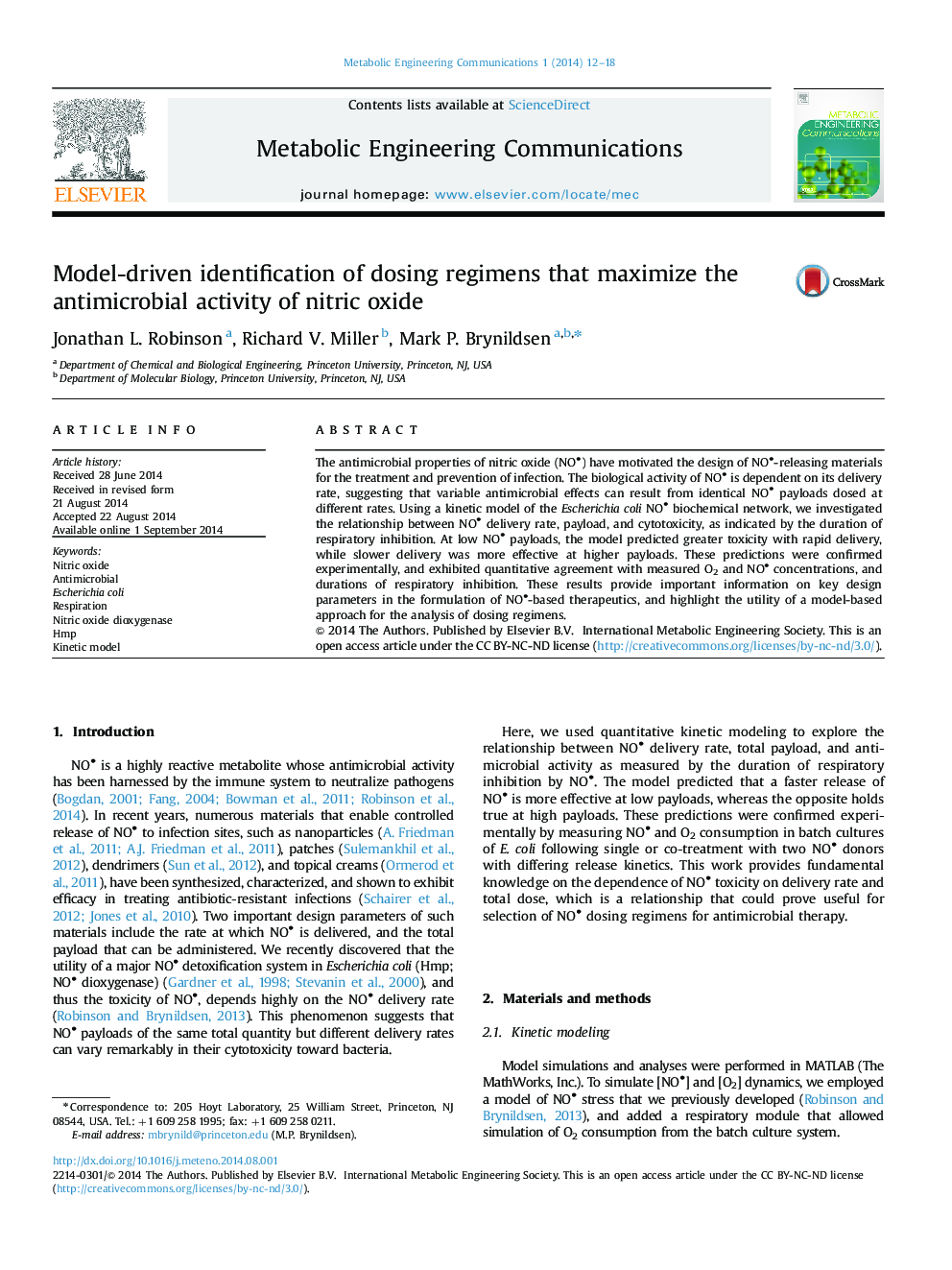| Article ID | Journal | Published Year | Pages | File Type |
|---|---|---|---|---|
| 571860 | Metabolic Engineering Communications | 2014 | 7 Pages |
Abstract
The antimicrobial properties of nitric oxide (NOâ) have motivated the design of NOâ-releasing materials for the treatment and prevention of infection. The biological activity of NOâ is dependent on its delivery rate, suggesting that variable antimicrobial effects can result from identical NOâ payloads dosed at different rates. Using a kinetic model of the Escherichia coli NOâ biochemical network, we investigated the relationship between NOâ delivery rate, payload, and cytotoxicity, as indicated by the duration of respiratory inhibition. At low NOâ payloads, the model predicted greater toxicity with rapid delivery, while slower delivery was more effective at higher payloads. These predictions were confirmed experimentally, and exhibited quantitative agreement with measured O2 and NOâ concentrations, and durations of respiratory inhibition. These results provide important information on key design parameters in the formulation of NOâ-based therapeutics, and highlight the utility of a model-based approach for the analysis of dosing regimens.
Keywords
Related Topics
Physical Sciences and Engineering
Chemical Engineering
Bioengineering
Authors
Jonathan L. Robinson, Richard V. Miller, Mark P. Brynildsen,
